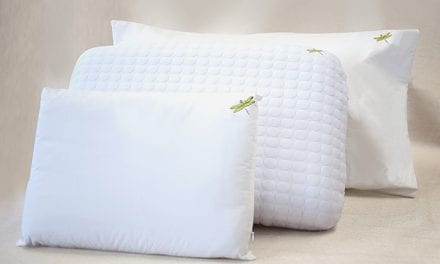 |
As the executive director of the American Sleep Apnea Association (ASAA), I am in the enviable position of being able to learn from patients and physicians about the current practice and methodology for treatment of sleep apnea. From my discussions with them, I’ve come to appreciate the challenges of treating sleep apnea. Putting together the pieces from my interaction with the sleep apnea community, I’ve developed a model pathway for the treatment of sleep apnea. What follows are my thoughts (and not those of the ASAA) on how the “ideal” pathway would work.
One of many challenges to an ideal pathway is understanding the role of all the different players, beginning with the primary care physician (PCP). There are the specialists: sleep physicians, pulmonologists, ear, nose, and throat surgeons, dentists qualified in sleep medicine, neurologists, psychiatrists, psychologists, and the allied health professionals who work with them. Once the diagnosis is made, there are durable medical equipment (DME) companies and respiratory therapists involved with treatment and follow-up care.
With so many health care providers, it is no wonder that people who think they have sleep apnea can be confused. Puzzled people often turn to the ASAA to figure out who is who, and what to do next.
Three assumptions underlie my thinking about an ideal treatment pathway. The first is that sleep apnea is a chronic condition that requires ongoing care. The second, the PCP, who is frequently the gatekeeper for referrals to specialists, is a critical player in connecting patients who suspect they have sleep apnea with appropriate diagnosis and treatment. The third is that the pathway options presented here are not currently available as validated or covered treatments. But what is presented represents an idealized view.
THE ROLE OF THE PCP
The PCP is the first medical professional the patient with suspected sleep apnea sees. As such, the PCP should know how to initiate the sleep apnea diagnostic process, have a basic understanding of sleep disorders, have the tools available, and have the ability to screen for such disorders. In the case of sleep apnea, a questionnaire for use in the office or an overnight home screening tool would provide the properly trained PCP with sufficient indication about whether the patient should be referred to a sleep specialist for further testing.
THE SLEEP SPECIALIST STEPS IN
Based on the recommendation from the PCP and from an interview with the patient, the sleep specialist would determine whether a facility-based sleep study is required or if using an unattended study would be adequate to diagnose sleep apnea.
|
Search Sleep Review’s online archives for more information about treating sleep apnea. |
The sleep specialist would review the results of the study and discuss them with the patient. Based on the severity of disease and the individual characteristics of the patient, the patient would be referred to the appropriate treatment specialist. In the case of mild to moderate OSA, the patient could be sent to a dentist specializing in sleep medicine for an oral appliance or to an ear, nose, and throat surgeon for correction of an airway obstruction or the Pillar Procedure. Positive airway pressure (PAP) therapy may also be appropriate for some of these patients. In the case of moderate to severe disease, PAP therapy would likely be the first line treatment.
The titration of PAP could take place as a part of the diagnostic study in the case of a moderate to severe condition, or by means of an auto-titrating PAP device, if an unattended home study is done.
The PCP would be in the information loop throughout this process. The PCP is the coordinator of health care for the individual patient and the point of contact for the patient for ongoing care.
In the case of moderate to severe disease, which involves prescription of PAP therapy, the DME company would provide the device, set the device according to the prescribed pressure, be responsible for the initial instruction on the use of the machine, and find a mask that fits to provide maximum benefit.
Monitoring the patient’s adherence to PAP is a key to successful treatment. Therefore, the device needs to be equipped with data-recording capabilities. This information would be gathered periodically by the respiratory therapist or sleep technician either through an in-person visit or by electronic download. The report on the efficacy of treatment, generated from the device, would be transmitted to the sleep specialist and the PCP.
FOLLOW-UP IS IMPERATIVE
For mild to moderate cases referred to a qualified dentist or an ear, nose, and throat surgeon, follow-up would be required in the early stages of treatment. The dentist would make certain the oral appliance fits, and the ear, nose and throat surgeon would ensure proper healing. The follow-up can be coordinated through the PCP.
For the PAP therapy patient, the interval for follow-up should be shorter in the beginning, since it is in the early stages that adherence to PAP is most challenging, particularly if the benefits of a good night’s sleep take an extended amount of time to be realized.
In between follow-ups with the respiratory therapist or sleep technician, a patient experiencing challenges getting accustomed to treatment or interested in learning more about sleep apnea should be encouraged to participate in a support group such as those sponsored by the ASAA, including A.W.A.K.E. (Alert, Well, And Keeping Energetic). Attending meetings is a way for patients to share their individual insights with others and to learn how to better manage their condition.
The A.W.A.K.E. group would ideally be led by a patient and facilitated through a collaboration of the sleep lab/center and one or more DME companies.
In addition to follow-up visits during the first year of treatment, the patient should be aware of the replacement schedule for the disposable parts of their PAP device (mask, hoses, and filters). If an insurance company is involved, it may dictate the replacement schedule. Otherwise, the disposable parts should be replaced according to the manufacturer’s schedule.
The patient should receive reminders, with a copy to the PCP, to make sure appointments are being kept.
The chart shows an “ideal” follow-up schedule for those using PAP therapy*:
 |
DEALING WITH MODERATE TO SEVERE CASES OF SLEEP APNEA
Some patients with moderate to severe sleep apnea cannot tolerate CPAP. For them, some form of combined therapy would require the coordination of several specialists in resolving the apnea: for instance, undergoing surgery to correct a deviated septum, initiating the Pillar Procedure, or having a qualified dentist provide an oral appliance.
Cases that are otherwise untreatable should be referred for radical surgical options such as tracheostomy or maxillomandibular advancement as a last resort. Post-surgery, these patients would have ongoing care from the PCP.
To summarize my “ideal” treatment pathway:
- PCP screens the patient for sleep apnea using a questionnaire or a screening device.
- If the patient tests positive for sleep apnea, or has symptoms that cannot be explained otherwise, the PCP refers the patient to a sleep specialist for a sleep study.
- The sleep specialist conducts an in-lab PSG or a home test, then develops a treatment plan.
- If the condition is mild to moderate, a further referral would be made to a qualified dentist, or an ear, nose, and throat surgeon.
- If the condition is moderate to severe, PAP is prescribed and pressure is titrated.
- The DME provider sets the PAP pressure, and the patient receives PAP instruction from a respiratory therapist.
- For follow-up of non-PAP therapy patients, make certain therapy is working and/or healing is occurring.
- Adherence is monitored according to a set schedule, and opportunities for support and continuing education are made available.
- After a predetermined period of treatment, the patient is evaluated to see if therapy should be continued or if combined therapy is required. Appropriate referrals are made if necessary.
Realizing this ideal pathway would require a number of changes to the way sleep apnea is currently treated. The first change would be the recognition by the Centers for Medicare and Medicaid Services that sleep apnea is a chronic condition and, as such, requires extensive patient education and ongoing care after diagnosis and initial treatment. This change could modify how services are reimbursed for the various health care professionals involved.
Another change would be the acceptance—through validation—of alternative technologies for the diagnosis of sleep apnea, as well as the recognition of telemedicine as a viable and reimbursable mechanism for the physician/health care professional to provide ongoing care to apnea patients. There would also need to be acceptance that sleep apnea treatment requires an interdisciplinary approach and a high degree of cooperation among all parties involved so that patients are treated effectively.
Edward Grandi has served as executive director of the ASAA since May 2004. Before entering the nonprofit sector, he spent 20 years as a property-casualty insurance broker in the Washington area.





